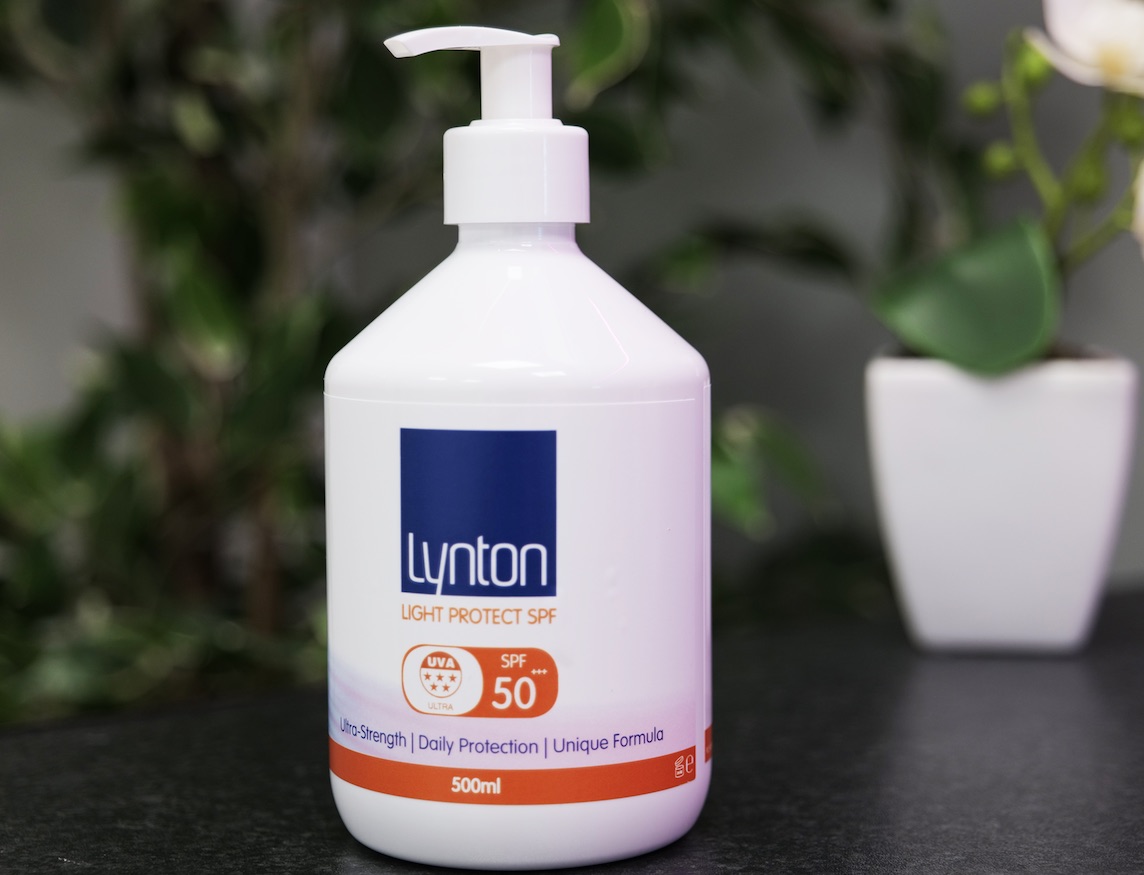Hyperpigmentation vs melasma: causes, symptoms and best treatment

As we head in to summer, arming yourself and your therapy team with the knowledge to treat hyperpigmentation and melasma will help you to provide your clients with the best course of action.
In this helpful guide, we explain what hyperpigmentation and melasma are, how these conditions present themselves, contraindications to be aware of, and how to to treat the skin effectively in treatment and with homecare.
For a more bespoke focus on how to treat hyperpigmentation and scarring caused by adult acne, then check out this handy guide.
What is hyperpigmentation?
“Hyperpigmentation is a term used to describe discolouration on the skin or abnormal darkening of the skin,” says Maria Rylott-Byrd, facialist and clinic owner based in Buckinghamshire, and member of The Skin Collaborative. “It is an overproduction of melanin from the melanocytes, and that travels its way up to the surface of the skin where you see that discolouration.” It can have several causes, one of the biggest being UV damage. “The sun is a huge cause of hyperpigmentation,” adds Rylott-Byrd.
"It needs a layer of protection with UVA and UVB protection with broad-spectrum SPF. Medications and hormonal factors, such as pregnancy and oral contraceptives, can also have an effect.”
[Sponsored content] Best products to treat hyperpigmentation:
Lynton Light Protect
Aesthetic device brand Lynton understands that sun exposure accounts for around 90% of the signs of skin ageing, which is why it has created Light Protect – a five-star, Boots-accredited SPF 50. Designed with the customer in mind, it doesn’t leave the skin covered in the usual chalky or greasy residue that you can experience with other sunscreens, and it works as a perfect base under make-up.
Available in both retail and professional sizes, the product provides versatility for salon and clinic owners through either additional revenue for the business or as a protectant following laser and IPL treatments.
Price: £52 for the 500ml professional size; from £15.16 for the 50ml bottles
Casmara Advanced Nácar Treatment Beauty Plan Clarifying and Lightening
This treatment acts beyond the epidermis, acting on a wide spectrum of factors that trigger melanin synthesis, the appearance of dark spots and irregular skin tone. It includes renovating-exfoliant, anti-melanogenic-depigmenting and anti-ageing active ingredients that remove the superficial layer of dark spots in the skin, lightening them and accelerating skin renewal.
This action also substantially decreases any additional contributions of melanin in the hyperpigmented area, preventing the worsening of dark spots or the appearance of new ones, while repairing damage at the cellular level.
Trade price: £47.38
What is melasma?
Melasma is similar to hyperpigmentation, but is usually triggered by hormonal factors, be it thyroid dysfunction, pregnancy or hormonal contraception, as well as genetics, UV and medications, explains Jody Taylor, owner of Skin Deep clinic and academy in Doncaster.
“Melasma appears more in a block formation, whereas hyperpigmentation has a more mottled appearance on the skin. And under a Woods lamp, the melasma will appear unchanged under the light,” she says. It’s also more prevalent in women than men due to the hormonal factors that can trigger it, and in ages 25–40 and those with Fitzpatrick skin type three and four.
It’s also harder to treat. “Epidermal pigmentation (solar keratoses) responds well and more quickly to treatment, while dermal pigmentation (melasma or chloasma) usually takes longer to lighten,” says Jacqui Faucitt, chief executive of RégimA International Skin Treatments.
Taylor notes that melasma can present in a number of ways, including:
• Centro facial, which appears on the forehead, cheeks, nose and upper lip. This is prevalent in 50–80% of presentations of melasma and is also known as the “butterfly effect”
• Malar, which affects the cheeks and nose
• Mandibular, which appears on the jawline and chin
• Erythosis pigmentosa facei, which presents as reddened or inflamed. This is vascular melasma and will have a red tinge
• Extra facial, which can appear on the forearms, upper arms and shoulders.
What should I cover in the consultation?
Conducting a through consultation with your client is imperative to treat any kind of hyperpigmentation, including melasma. “It can be genetic, especially peri-orbital and peri-oral. It’s very common that we see a genetic pattern to it, particularly in Asian skin types,” says Dr Raquel Amado, aesthetic medicine doctor, skin specialist and member of The Skin Collaborative.
“Medication such as tetracycline, antibiotics, naproxen, which is an anti-inflammatory commonly used for osteoarthritis and inflammatory conditions, and psychotics can cause photosensitivity. Therefore, it is very important that we do a thorough consultation to find out about any prescription drugs,” she says.
How do I prepare the skin for treatment?
Tyrosinase inhibitors are crucial for treating this concern. “Whether the client is Fitzpatrick one or six we need to use tyrosinase inhibitors,” says Sarah Hurst, founder of Sarah Hurst Skin Clinic in Brighton and member of The Skin Collaborative. “Tyrosinase is the enzyme that increases the melanocyte and melanin production,” she says, so look to ingredients such as kojic acid, vitamin C, tranexamic acid, azelaic acid and liquorice root, which can help inhibit melanin production.
Moreover, establishing a good homecare routine in conjunction with broad-spectrum SPF is important to prepare the skin for any treatment. “I wouldn’t do any type of advanced treatments in clinic without healthy and balanced skin,” advises Rylott-Byrd.
“I’d look at the client’s lifestyle and homecare routine and bring together a plan to help the skin have a strong integrity. If we do look at advanced treatments, then we’d want to prepare the skin accordingly; we’ve mentioned the tyrosinase and creating that umbrella over the skin with SPF, and then we need to look at some kind of exfoliation to shatter that pigment.”

How can I effectively treat hyperpigmentation and melasma?
“There are many methodologies for shattering pigment and my personal preference is to work with chemical peels and microneedling, as we can use it across the board, as long as we can get the preparation time right,” says Hurst. “This is because you need nice, hydrated skin, so recovery time is going to be minimised and we won’t hinder any results in any way,” she says.
For an enhanced outcome, you should set up your client’s pre-treatment care two-to-four weeks prior to their treatment programme, advises Taylor. “For darker skin tones, the longer the homecare the better,” she adds. “However, depending on the treatment, you may need to ask them to discontinue the products three to five days ahead, depending on the type of ingredients used.”
Whether you opt for microneedling or chemical peels, a gentle approach is favoured. “Starting with a chemical peel that is gently exfoliating, and building those peels up, is important,” says Hurst. “When you go in for a deeper peel to get rid of pigmentation quickly, you should also prep the skin thoroughly, firstly at home and also with more superficial chemical peels within the clinic, before moving on to anything deeper.”
Dr Amado agrees: “We used to treat pigmentation with microneedling at a much deeper depth than we do nowadays, but we have to be gentle,” she says. “For hyperpigmentation, I’d use 0.5mm because we don’t want to stimulate that basal cell too much, as that can cause more pigmentation.”
When it comes to laser, Hurst says it’s not her preferred treatment. “With the higher Fitzpatrick colours, it’s very important to be careful with laser due to the fact that pigmentation can be absorbed, so if you are going to be treating pigmentation, it’s better if you’re treating a spot area as you may be able to cover over the rest of the skin,” she says.
“But to overtreat on a whole area can be very dangerous, particularly with the ablative lasers. A gentler form of IPL may be preferable, but it wouldn’t be our treatment of choice.”
To ensure a successful treatment for melasma, the underlying triggers need to be addressed and removed where possible. “If the client is on the contraceptive pill and we think this might be a trigger, then we can try giving them tyrosinase inhibitors, but you need to work with the client because you might not necessarily get the best results on somebody who has got the trigger still in place,” says Hurst.
“Once that hormonal stimulation has gone, the melasma will generally subside, but it can be stimulated by the sun moving forward, so you still need to practise homecare, the tyrosinase inhibitors and SPF,” advises Rylott-Byrd. “You can treat it in the same way, as it is all hyperpigmentation, but you might need to treat just the area, as opposed to the whole face.”
But, whether you’re treating hyperpigmentation or melasma, it’s important to explain to the client that the treatment process is a partnership between you both.
How can I manage client expectations?
“A good consultation will explain the science behind it – people are not aware that with two-to-three days of unprotected UV radiation you will undo everything that you have done for a whole year,” says Dr Amado. “Patients need to be committed; if they’re not going to use their SPF or their tyrosinase inhibitors, there’s no point in doing chemical peels and microneedling in clinic because you will be fighting against it all of the time,” she says.
“On average, it takes about 12 months to reprogramme the melanocytes (the cells that produce melanin), so it is going to be a long programme and will need to be maintained.”
How should I tailor my homecare advice?
There are several ingredients that can support your client’s skincare journey and maintain their results. Hurst recommends kojic acid, tranexamic acid, vitamin C, liquorice root, azelaic acid and AHAs such as glycolic, lactic and mandelic.
“Niacinamide has been shown to help regulate hyperpigmentation and so has vitamin A because it’s such a good skin normaliser, as is green tea,” says Hurst. Dr Amado also recommends cysteamine. “This ingredient is also a tyrosinase inhibitor but with no down time. You can use it long-term and it does not need a prescription,” she says.
Using a broad-spectrum SPF is crucial to maintain progress and prevent pigmentation from returning. While many will apply this first thing in the morning, it’s important that clients also top up their SPF protection throughout the day. However, some may find SPF irritating for the eye area, or inconvenient to reapply over make-up.
“My go-to is a physical mineral powder,” explains Hurst. “Many clients say they avoid putting SPF around their eyes as it runs and causes irritation, so mineral powder is brilliant for that,” she says. For those who want to top up their UV protection over make-up, she advises a spray, saying, “There are some good sprays now, but ideally you want to reapply every couple of hours.”
Lifestyle adjustments
To keep hyperpigmentation and melasma at bay, Rylott-Byrd recommends discussing the client’s lifestyle habits. “It’s not enough to have an SPF on. If it’s a bright sunny day, stay in the shade and wear a big hat and sunglasses. I see a lot of pigmentation just about where the sunglasses stop, as people tend not to bring their SPF close to the eyes,” she says.
It’s also important to talk through any hormonal factors that could be causing problems. “Clients should know their triggers. For example, if you know you are susceptible on oral contraceptives, perhaps find another contraception method,” she says.




